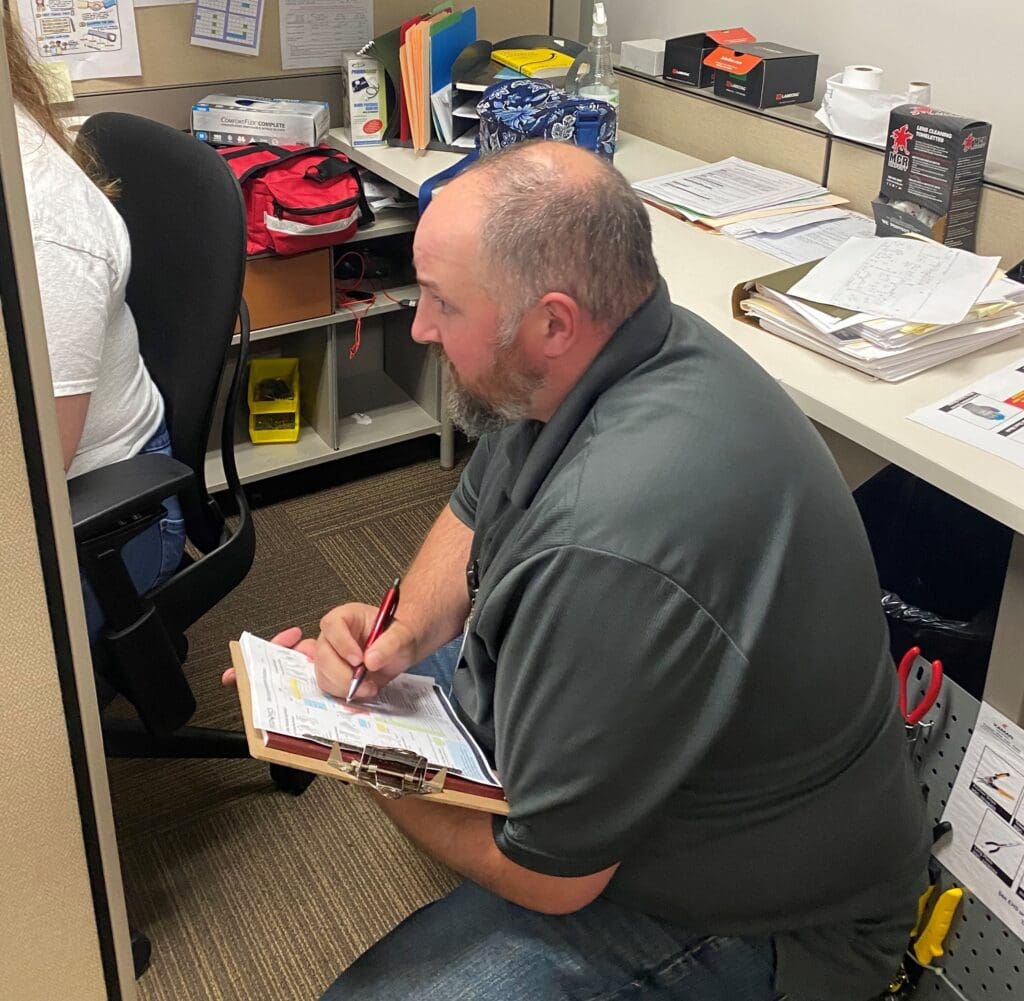How to Implement a Sustainable Ergonomic Program

By Jeffrey Sheridan, Injury Prevention Specialist
In all industries and settings, there are opportunities for improvement, especially when it comes to ergonomics. Whether employees are sitting behind a desk working on a computer all day or pushing out product on a manufacturing floor, proper ergonomics is important for good health and wellness.
Benefits of Implementing a Sustainable Ergonomic Program
Effective ergonomic plans directly boost employee well-being and help to decrease injuries and pain that employees might sustain at work. Proper ergonomics also helps with cost savings, as it helps to decrease employee pain, limit workers’ comp claims, missed workdays, decreased productivity, etc. Successful ergonomics programs are a win-win for employees and employers.
So, knowing all the benefits of a properly designed ergonomic workstation, why do we still see so many that are not ergonomically friendly? Why is it so hard to get buy-in from staff that this is better than their old way, or from leadership to purchase the right equipment? It all starts at the bottom.
Building a proper ergonomics program from the ground up will help with buy-in from all levels and maximize time and effort spent.
How to Create a Sustainable Ergonomic Program (SEP)

What are the steps to building a sustainable ergonomic program (SEP) then? Let’s take a deeper dive:
The goals of a successful SEP should be as follows:
- Full buy-in from all staff through collaboration, education and relationship building.
- Full buy-in from leadership through education and diligent data collection and reporting.
- Baseline ergonomic assessments for all areas where work is, or could be, performed, with problem areas noted for continued monitoring.
- Reduction of risk in all areas as low as possible.
- Constant follow-up with all employees and areas to maximize follow through, allow opportunities for feedback and be open to continued change as needed.
Now that we have our goals, what are the steps we can take to reach them?
-
Build the overall plan: all programs start with a well-developed plan. It should be individualized to the company. Key elements of your plan should include:
- Identify areas of concern/ergonomic risks: high injury areas, people who are in static positions, people who are lifting, etc.
- Build a timeline: break it into quarters, months, days, whatever is right for the size of your company.
- Build your long-term plan: follow-up strategies, new employees, new machines, expansion areas, etc.
- Decide how you will do your assessments, how you will keep your records, etc.
-
Market your new program/plan with everyone at your site
- Make any presentations to leadership needed (if you’re the decision maker this is the time to sell the idea to the company).
- This is an opportunity to solidify the relationship with leadership and get them on board.
- Use lots of data and information to ensure good buy-in.
- Send out informational emails.
- Describing what ergonomics is
- Describe the new program being implemented including the benefits
- Employee engagement is crucial for a success SEP and also helps employees to feel valued
-
Implement your program!
- Begin performing ergonomic assessments on all people and areas.
- Perform standardized assessments so the program is easily replicable in case of turnover.
- Maintain detailed and consistent records, reports and notes.
- Complete real time follow-up with people you have assessed.
- Don’t wait months to return; do it in a few days. This will maximize carryover and follow through.
- It will also build the relationships with the employees that will be vital for this program to work.
-
Long term management
- Build budgets appropriately based on current and past records for departmental needs.
- Set and follow schedule for continued follow ups to people and areas.
- Keep leadership regularly informed of your progress.
- Constant monitor and adjust as needed for continued assessments, new and improved equipment to purchase, newest literature and research.
Once the program has been implemented, it’s important to maintain consistency.
– Consistent walk throughs and follow-ups with the employees.
– Consistent reminders, tips, tricks, etc. for people to use daily.
– Consistent face time with everyone possible.
Consistency is key to a sustainable ergonomics program. The more people see and interact with the program, the more the culture can develop. Without a positive culture, follow through by staff will be lower, actions won’t change, and you’ll always be stuck wondering what else you can do to get the desired effects. If all else fails, consulting an ergonomics professional, like the one’s from Employer Services at PTSMC, can help to lighten the load and make changes easier and more long lasting.
So, keep overloading with your smiling face, and eventually you’ll see all the little changes you’re implement taking hold, and your culture of safety developing in a way you never thought it could.
As always, good health and proper ergonomics for all!
